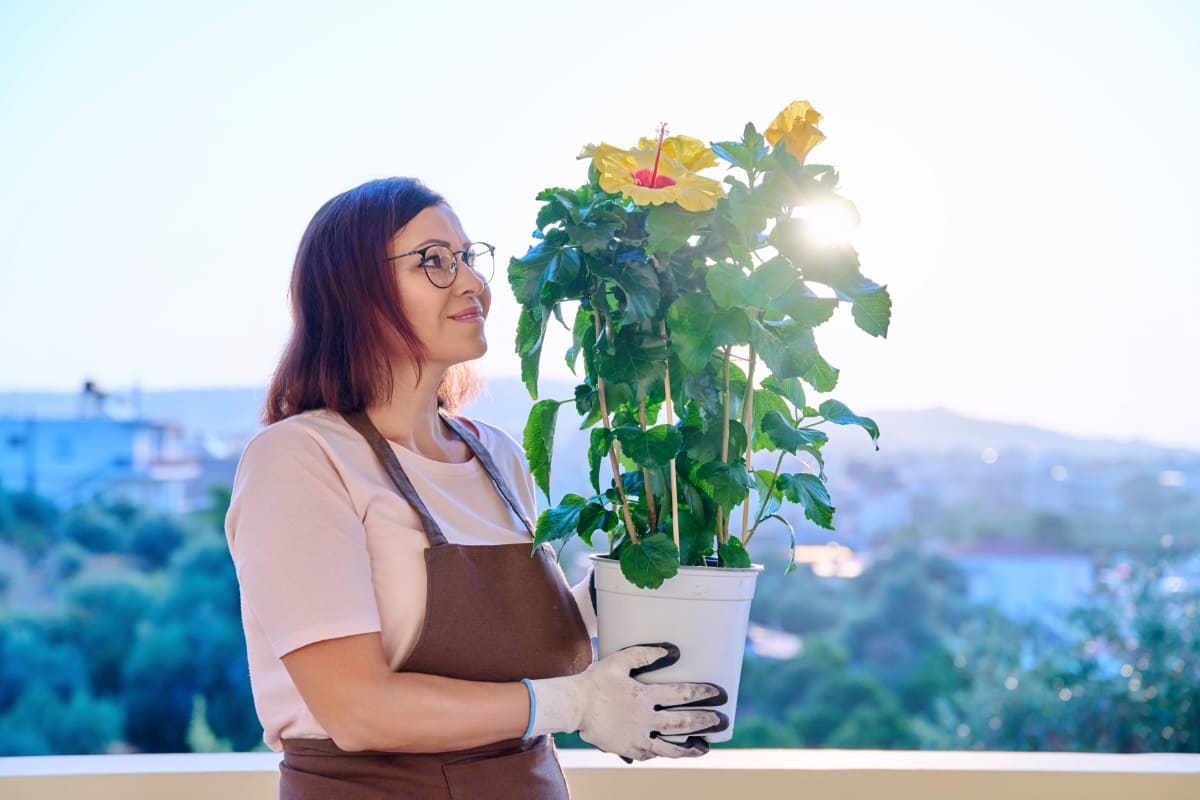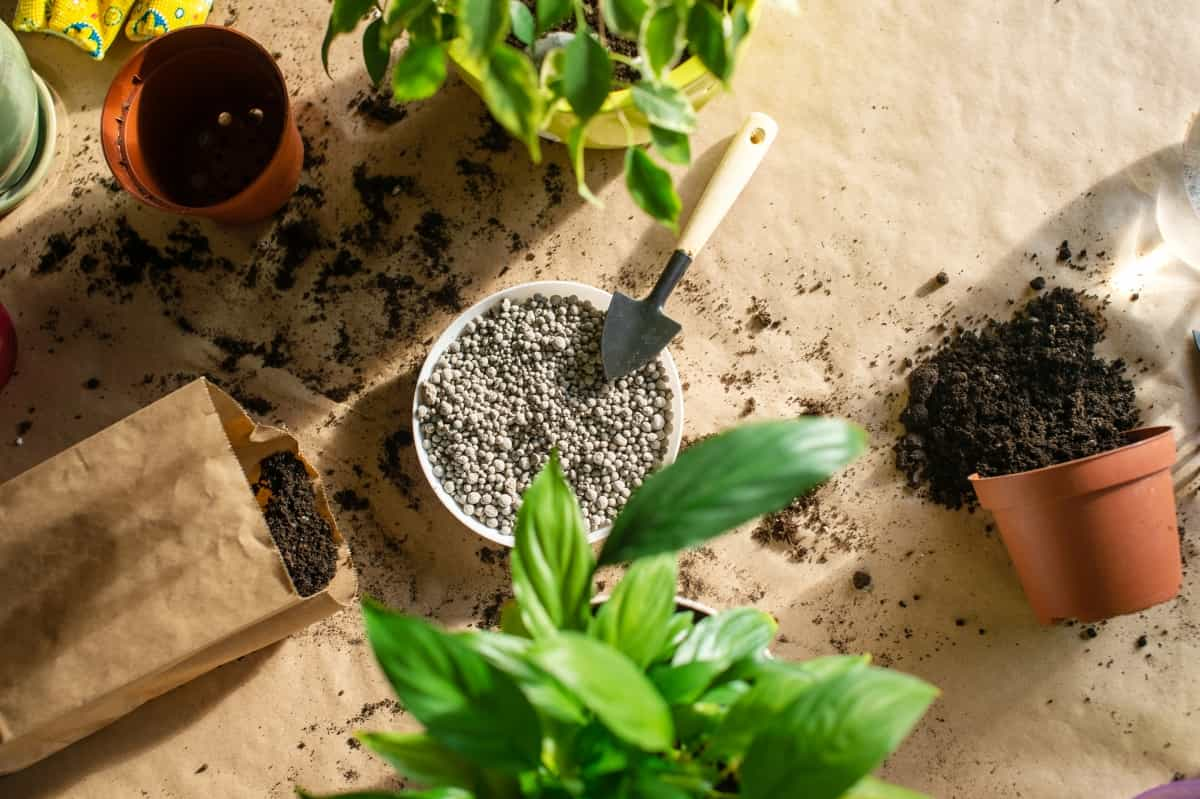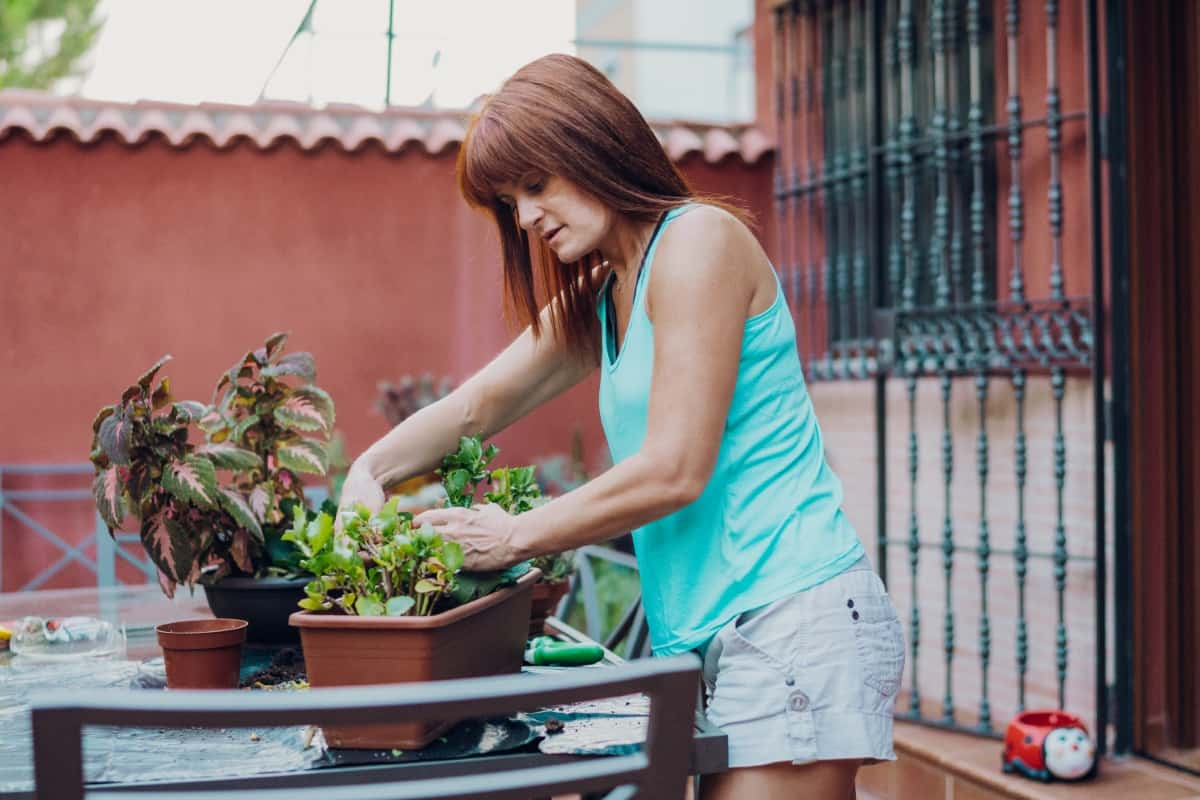Cultivating terrace plants is an art that requires a balanced blend of sunlight, water, soil, and fertilizer. The latter is especially critical for plant growth and vitality, acting as plant food and providing essential nutrients for their development. Fertilizers come in both synthetic and natural forms and are available in various blends to meet your plants’ specific needs.

Best Fertilizer for Terrace Plants
Best Time to Fertilize Plants
The best time to fertilize your plants largely depends on their growth cycle and the type of plant. Generally, fertilizing is most beneficial during the growing season, when plants actively produce new leaves, flowers, or fruits. For most plants, this is typically in the spring and summer. However, some plants may have unique growth cycles, so it’s crucial to understand your specific plants’ needs.
Fertilizing early morning or late evening, when temperatures are cooler, is often recommended. These are times when plants are less stressed and more capable of absorbing nutrients without the risk of fertilizer burn. During these times, plants’ stomata (tiny openings on the leaf surface) are more open, allowing for better nutrient uptake.
How Often to Use Fertilizer on Terrace Plants
The frequency at which fertilizer should be applied is contingent upon various factors, including the specific plant species under cultivation, the type of fertilizer employed, and the overall vitality of the plants. Most plants benefit from regular fertilization every 4-6 weeks during the growing season. However, always follow the recommended dosage and frequency guidelines on the specific fertilizer package, as over-fertilization can lead to nutrient toxicity, causing damage to your plants.
It is crucial to diligently monitor your plants for indications of nutrient insufficiency, such as the occurrence of yellowed leaves, impaired growth, or inadequate flowering. These signs may indicate that more frequent fertilization is needed. Conversely, signs of over-fertilization, like leaf burn or unusually rapid growth, may suggest cutting back on fertilization.
When and How to Fertilize
Fertilizing should ideally be done when the soil is moist, not when it’s parched, dry, or overly wet. This helps the fertilizer to dissolve and distribute evenly through the soil. To utilize water-soluble fertilizers, blend the suggested quantity with water and administer it at the plant’s base while ensuring to prevent contact with the foliage.
For granular fertilizers, spread them evenly around the plant base and lightly mix them into the top layer of soil. A good practice is to water your plants lightly before and after applying fertilizer. The initial watering prepares the soil to receive the fertilizer, and the subsequent watering helps distribute the nutrients evenly throughout the soil.
In case you missed it: The Best Fertilizer for Frangipani/Plumeria: When and How to Apply

Best Homemade Natural Fertilizers
Homemade natural fertilizers are an eco-friendly and cost-effective way to nourish your terrace plants. They are usually gentler on plants, and unlike synthetic fertilizers, they improve soil structure over time. Here are a few options:
- Compost: Compost is a nutrient-rich organic matter created by decomposing kitchen waste like fruit peels, vegetable scraps, coffee grounds, and eggshells. It has a balanced NPK ratio (Nitrogen, Phosphorus, Potassium), making it an excellent all-purpose fertilizer.
- Banana Peels: Rich in potassium, banana peels are great for promoting flower and fruit production. To execute the task, it is advisable to finely cut the peels into smaller fragments and subsequently inter them within the soil.
- Eggshells: Eggshells possess a commendable calcium content that aids in fortifying the structural integrity of plant cell walls. Rinse and crush the shells, then sprinkle them around your plants.
- Worm Castings: Also known as vermicompost, worm castings are rich in nutrients and beneficial microbes. They possess the versatility to be incorporated directly into the soil or utilized in the production of a nutrient-dense infusion, commonly referred to as a “tea,” for irrigating plants.
Best Synthetic Fertilizers for Terrace Plants
While natural fertilizers are great for long-term soil health, synthetic fertilizers are more concentrated and fast-acting. They’re especially useful for plants with specific nutrient needs. Here are some highly effective synthetic fertilizers:
- All-purpose Water-soluble Fertilizers: Products like Miracle-Gro (24-8-16 NPK) are general-purpose fertilizers suitable for many plants. They’re quickly absorbed and provide a balanced nutrient profile.
- Slow-release Granular Fertilizers: These fertilizers, such as Osmocote (14-14-14 NPK), release nutrients slowly, reducing the need for frequent applications.
- Balanced Fertilizers: A balanced fertilizer like a 10-10-10 or 20-20-20 NPK provides equal proportions of nitrogen, phosphorus, and potassium. These are excellent for most plants and especially for flowering and fruiting plants.
- High Nitrogen Fertilizers: Fertilizers with a high nitrogen content (like a 24-4-12 NPK) are excellent for promoting lush green foliage. They’re ideal for leafy vegetables and foliage plants.
Understanding NPK Ratios
The NPK ratio on a fertilizer package represents the proportion of Nitrogen (N), Phosphorus (P), and Potassium (K) in the mix. Nitrogen promotes healthy leaf and stems growth; Phosphorus is essential for root development and flowering, and Potassium aids in overall plant health and disease resistance. Choosing the right NPK ratio depends on your plants’ needs. For instance, if you want to stimulate leafy growth, a high-nitrogen fertilizer would be best. On the other hand, to boost flowering or fruiting, a fertilizer with a higher phosphorus content would be more suitable.
Understanding the Nutrient Needs of Your Plants
Before you begin fertilizing, it’s crucial to understand the specific nutrient needs of your plants. Different plants have different requirements, and using the wrong type or amount of fertilizer can do more harm than good. For instance, leafy green vegetables and herbs like lettuce, spinach, and basil typically require high nitrogen levels to promote healthy, vigorous leaf growth. On the other hand, flowering and fruiting plants like tomatoes, peppers, and roses need a balanced blend of nutrients, emphasizing phosphorus for flower and fruit development.
In case you missed it: The Best Fertilizer for Zinnias: When and How to Apply

When assessing your plants’ nutrient needs, consider factors such as their growth stage, the time of year, and any visible signs of nutrient deficiency. Yellowing leaves might indicate a nitrogen deficiency, while weak stems and poor flower or fruit development could signal a lack of phosphorus. Remember, the key to successful fertilizing is not just providing nutrients but the right nutrients in the right amounts.
Conclusion
Fertilizing your terrace plants involves more than just adding nutrients to the soil. With this comprehensive guide, you can make informed decisions about fertilizing your terrace garden.
- Feed Your Flock for Less: Top 10 Tips to Save on Chicken Feed
- Ultimate Guide to Ossabaw Island Hog: Breeding, Raising, Diet, and Care
- Hatching Answers: The Top 10 Reasons Your Chickens Aren’t Laying Eggs
- Eggs and Economics: Breaking Down the Cost of Raising Backyard Chickens
- Defend Your Greens: Proven Methods to Keep Iguanas Out of Your Garden
- Ultimate Guide to Cinnamon Queen Chicken: A Comprehensive Guide for Beginners
- Ultimate Guide to California Tan Chicken: Breeding, Raising, Diet, Egg-Production and Care
- Ultimate Guide to Marsh Daisy Chicken: Breeding, Raising, Diet, and Care
- 10 Types of Chicken Farming Businesses You Can Start for Profits